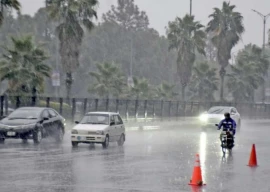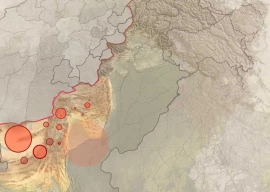
What ruffled the military high command most was the eagerness of the government to push the Musharraf trial as the centerpiece of its new authority. This was obviously wholly unacceptable. Probably, the prime minister was under the false impression that having appointed General Raheel Sharif as the army chief, he could move fast on establishing his writ on domestic and international policy issues. Regrettably, he soon realised that he would have to withdraw and remain content with reduced powers if he were to survive. But in the bargain, he lost more power than he enjoyed prior to these hasty moves. What was overlooked was that the army chief, however close he may be at a personal level, has to accord precedence to the army’s institutional interests. And as is common knowledge, ever since the creation of Pakistan, the military has strived for dominance in national policy formulation, even when it has not been ruling the country directly.
As a consequence, a unique model of governance has emerged wherein power and policy is shared between military and civilian leaderships in which the veto rests with the former. To make this palatable and sellable to the people, it is trumpeted that the military and civilian leaderships are on the same page. Whereas everyone knows what in reality this power configuration implies in reality. The other manifestations of this partnership are that on all foreign tours and important in-country meetings, the army leadership is present.
Circumstances and historical imbalance in civil–military relations have compelled the prime minister to reconcile to his reduced powers, in comparison with what he ought to have exercised in accordance with the Constitution. After all, necessity is the mother of invention. But the danger is, if this arrangement is allowed to continue for too long, it could have long-term implications by further weakening our democratic structure. The reason is obvious and somewhat in simpler terms can be explained as follows:
Semi-democratic countries like ours, in order to move towards improving the state of democracy, have to strengthen institutions and this arrangement does not facilitate that process. Policy priorities of the military, its linear approach to security issues and dominance of it in policy formulation has demonstrated that these have not served the national interest in the longer term. The tragic separation of East Pakistan and the Kargil episode are some of its unfortunate outcomes. At the same time, to expect that the military will loosen its hold or surrender the privileged position that it enjoys voluntarily will be unrealistic. The viable option for the civilian leadership is to gradually regain power by strengthening existing institutions, building new ones, reinvigorating the economy and improving governance. Building and empowering institutions requires sustained effort and commitment by many stakeholders, which has been woefully lacking in the past. The judiciary’s role in strengthening the civilian government cannot be underestimated. Deliberate measures have to be undertaken to improve the rule of law and to make the judiciary accountable. The media has been playing an important role in promoting democratic norms. However, the primary responsibility rests with the politicians. The prime minister’s interest in parliament remains casual. The National Security Committee, on an average, has been meeting at six-month intervals instead of at least a bimonthly basis. Most of the important national decisions on security-related issues are taken in consultation with the army chief on a one-to-one basis. It should have been preferable if the decisions were taken within the framework of institutions, by the cabinet and the National Security Committee.
If Pakistan is to have a government that is accountable, then it is also fair to expect that all state institutions, including the military, should be included.
The inefficiencies of political parties result from patronage and hereditary politics. Unless these are internally democratic, it will not be easy to promote the culture of meritocracy. These factors all lead to the military’s dominance in Pakistani politics. The PML-N should not rest on the laurels of having braved the tsunami storm of the PTI and the substantial Chinese investment that it prudently negotiated. Its main weakness is its style and quality of governance at the federal level. Clear examples of this are evident from the way many parts of the National Action Plan remain unaddressed, as well as in the indifference shown towards matters relating to the development of Fata and outsourcing many areas of its responsibility to the army.
A factor that has always been missing in the discourse of fighting terrorism and extremism is the role of democracy. Experience worldwide and in our region demonstrates that militant groups have vastly expanded their influence in countries where dictatorships and weak democracies exist and the national economy is in distress. Even within countries, the same phenomenon is evident. Fata and Balochistan are relatively more prone to be exploited by militant organisations than other parts of Pakistan. It is not surprising that in these parts, the army is more dominant. It is hoped that as economic growth is sustained and education in the country becomes widespread, democracy will take deeper roots.
Published in The Express Tribune, April 29th, 2015.
Like Opinion & Editorial on Facebook, follow @ETOpEd on Twitter to receive all updates on all our daily pieces.













COMMENTS
Comments are moderated and generally will be posted if they are on-topic and not abusive.
For more information, please see our Comments FAQ